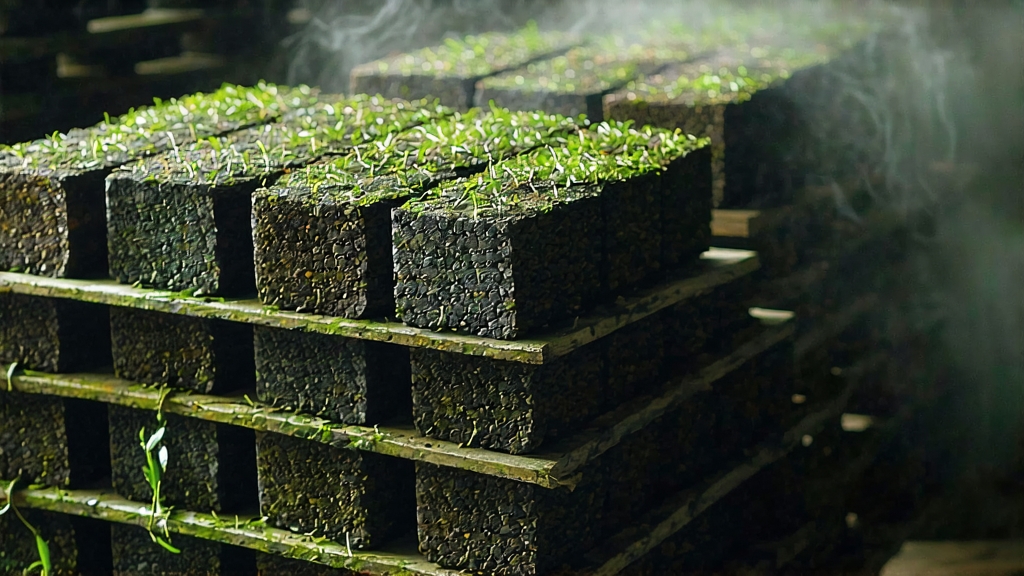
Liu Bao cha, literally “Six Forts tea,” is the quietest celebrity of China’s dark tea family. While Pu-erh hoards headlines and price bubbles, Liu Bao has spent four centuries maturing in the humid mountain folds of Guangxi, absorbing the scent of betel nut, bamboo smoke, and camphor until its leaves turned the color of rusted iron and its liquor mellowed into something closer to velvet than vegetation. To international drinkers it is still a cipher, yet in the dialects of Wuzhou and Cangwu the word liubao is spoken the way Burgundy is whispered in Beaune: a place, a craft, and a promise of time transformed into taste.
History: From Border Garrison to Maritime Silk Road
The name first appears in 1598, when the Ming imperial army built six defensive forts along the Liu River to pacify the southern tribes. Soldiers were paid partly in compressed tea, easier to transport than silver and safer to drink than river water. Caravans leaving Wuzhou for Guangzhou discovered that the humid march improved the tea: mold bloomed, enzymes woke, and the rough green leaf darkened into something sweet, deep, and stomach-settling. By the Qing dynasty Liu Bao was ballasted into the holds of clipper ships bound for Southeast Asia, where tin miners in Kuala Lumpur and rubber tappers in Medan adopted it as an antidote to malaria and monsoon fatigue. In 1886 the British consul in Singapore noted that “the Chinese laborers will accept no other tea; they say it drives the damp from the bones.” The route became so busy that European insurance maps of the Pearl River delta labeled one pier simply “L.B. Tea.”
Micro-terroirs within Guangxi
Guangxi’s folded karst creates a patchwork of tiny climates. The classic core is the basin around Liubao town, where red clay retains daytime heat and the Liu River drags cool mist upstream each night; leaf grown here gives the famous betel-nut note, a peppery camphor sweetness that lingers in the throat. Twenty kilometres west, the village of Shuangqiao sits 300 m higher; its tea is lighter, with orchid and dried longan aromas because the soil is sandier and the diurnal swing sharper. Further north, the limestone peaks of Muzhuling trap perpetual fog; farmers call their tea “shadow leaf,” prized for a dark cocoa body and a whisper of pine. Each micro-zone once had its own basket weave—hexagonal for Liubao, oval for Shuangqiao—so illiterate porters could sort bales by touch in the dark holds of river boats.
Leaf Architecture: Three Grades, One Soul
Traditional Liu Bao is plucked as a bud-and-two-leaf set, but the magic lies in how the pick is sorted after withering. Special grade (teji) keeps the downy tip intact, yielding a bright garnet liquor and a honeysuckle top note; first grade (yiji) mixes tip and mature leaf for balance; third grade (sanji) uses hardy lower leaves rich in cellulose, the preferred food of Eurotium cristatum, the golden mold that will later paint the leaf surface with microscopic freckles of yellow. Connoisseurs insist that the lowest grade ages most dramatically: its rough fiber becomes the scaffolding on which time hangs new flavors—jujube, damp bark, even truffle.
Craft: When Fire Meets Mist
Withering happens on bamboo trays set above the kitchen hearth; smoke drifts up, drying the leaf and gifting a phenolic whisper that later reads as incense in the cup. Once limp, the leaf is piled 40 cm deep in cypress-lined troughs and drenched with hot Liu River water. The pile is covered with jute sacks and left to ferment for 8–12 hours, a phase locals call “making the leaf sweat.” Temperature is judged by hand: too cool and the tea smells of boiled greens; too hot and it turns sour like wet cardboard. When the leaf’s core turns walnut-brown, it is quickly wok-fried at 200 °C for three minutes—just long enough to freeze the enzymes, not erase them—then rolled into tight curls that crackle like autumn twigs.
The rolled leaf is steamed soft again and packed into cylindrical bamboo baskets lined with wild banana leaf. A strong man stands barefoot on the bundle, compressing it until the basket walls bulge; the imprint of his heel will still be visible decades later. These